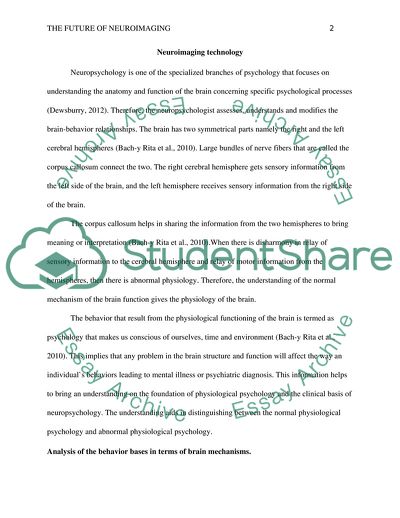Cite this document
(Neuroimaging and Neuro-Induction Technologies Reclaim and Reverberate the Brains Term Paper Example | Topics and Well Written Essays - 2000 words - 1, n.d.)
Neuroimaging and Neuro-Induction Technologies Reclaim and Reverberate the Brains Term Paper Example | Topics and Well Written Essays - 2000 words - 1. https://studentshare.org/technology/1837488-the-future-of-neuroimaging-technologies-andor-neurostimulation-techniques-to-explain-mend-and-manipulate-the-mind
Neuroimaging and Neuro-Induction Technologies Reclaim and Reverberate the Brains Term Paper Example | Topics and Well Written Essays - 2000 words - 1. https://studentshare.org/technology/1837488-the-future-of-neuroimaging-technologies-andor-neurostimulation-techniques-to-explain-mend-and-manipulate-the-mind
(Neuroimaging and Neuro-Induction Technologies Reclaim and Reverberate the Brains Term Paper Example | Topics and Well Written Essays - 2000 Words - 1)
Neuroimaging and Neuro-Induction Technologies Reclaim and Reverberate the Brains Term Paper Example | Topics and Well Written Essays - 2000 Words - 1. https://studentshare.org/technology/1837488-the-future-of-neuroimaging-technologies-andor-neurostimulation-techniques-to-explain-mend-and-manipulate-the-mind.
Neuroimaging and Neuro-Induction Technologies Reclaim and Reverberate the Brains Term Paper Example | Topics and Well Written Essays - 2000 Words - 1. https://studentshare.org/technology/1837488-the-future-of-neuroimaging-technologies-andor-neurostimulation-techniques-to-explain-mend-and-manipulate-the-mind.
“Neuroimaging and Neuro-Induction Technologies Reclaim and Reverberate the Brains Term Paper Example | Topics and Well Written Essays - 2000 Words - 1”. https://studentshare.org/technology/1837488-the-future-of-neuroimaging-technologies-andor-neurostimulation-techniques-to-explain-mend-and-manipulate-the-mind.


